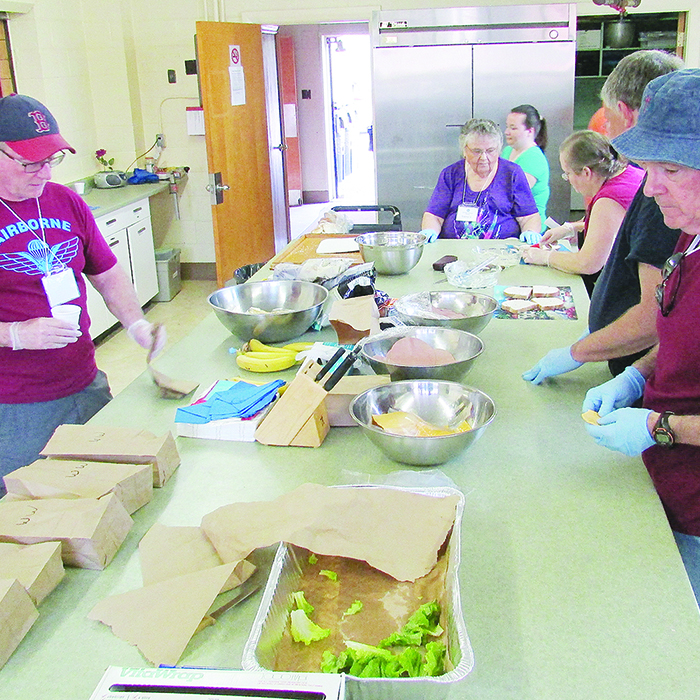
The positive fallout of Chatham-Kent’s low unemployment rate in September is being felt in social services as well.
The unemployment rate dropped below the provincial average for the first time since 2014, 6.2 per cent locally compared to 6.7 per cent.
And caseloads at social services in Chatham-Kent dropped as well, Valerie Colasanti, director of employment and social services said.
“For the first time in eight years, our caseload is starting to come down,” she said. “In 2007 – when the recession really hit us – our caseload was 2,478. It peaked in 2010 at 3,550. That’s a big increase. It went up a third.”
Colasanti said cases started trickling downward in 2011, but real progress occurred only recently.
“Now, we are sitting at 2,725 cases. We’re not back down to 2007 by any means,” she said.
As for employment, Acting Economic Development Director Stuart McFadden said there are around 50,400 people working in the municipality.
McFadden added the last time CK had this many people working was in September 2008.
Colasanti said Ontario Works caseloads traditionally do follow the unemployment rate to some extent, but there is a delay.
“When it goes up, we see a significant increase to our caseloads several months later,” she said.
In terms of impact from recessions, Colasanti said the bounce back after each recession never seems to get caseloads back down to pre-recession levels. Her office has been tracking numbers locally since the 1990s.
Still, there is reason for optimism, in her eyes, as there are fewer families on social assistance locally.
“The make up of our caseload has changed a bit. There are more single people on it,” she said. “What we are seeing is 59% of our caseload is for single people.”
That’s up nine per cent from pre-recession levels. Family numbers are dropping.
But how long people spend on social assistance is changing, and not in a good way. Colasanti said in the past, people would typically need social assistance for maybe three or four months.
“Now, we are seeing more people staying on the system for more than two years,” she said. “The longer you stay on, the further you get from the labour force, and the harder it is to get back on it.”
To help combat that, Colasanti said there are new employment programs in place.
“We’re also working to see where the jobs of the future are and where training is needed,” she said.
Colasanti scoffs at the idea people stay on social assistance rather than accept minimum-wage work because they are better off financially on assistance.
“A single person gets $708 a month. You would make more than that on minimum wage,” She said. “It’s not a lot of money, but you’d still make more.”
She added parents can also receive child-care subsidies when they work at lower income jobs.
Colasanti said one in five people on social assistance are employed, just not at a level high enough to be self-sufficient.
“Twenty per cent of our caseload is working. They’re just not getting enough employment to get off social assistance,” she said.
Most of that is due to people working part-time jobs – 26 hours or less a week – where there are no benefits, Colasanti said.
But with 20 per cent being partially employed, compared to just nine per cent during the recession last decade, she said this is good news.
“It does also show there are a lot of part-time jobs in Chatham-Kent,” she said. “But we look at it as a good news story.”
Colasanti said when the unemployment rate rises, the pressure falls on people at the lowest end of the employment scale.
“When the economy shrinks, basically you get over-qualified people dropping into entry-level positions,” she said. “As the economy gets better, people leave entry level jobs and get something better, opening up spots for people on social assistance.”
During economic downturns, it can be very tough on people to get off social assistance. Colasanti said it relates to a person’s distance from the labour market.
“If someone hasn’t worked for a while and their resume is average, they are probably not going to get an interview if there are a lot of people out there looking for work. It’s supply and demand,” she said.
Part of the problem in Chatham-Kent is education, or lack thereof. Colasanti said a high percentage of people who are on social assistance do not have post secondary education, let alone their Grade 12 diploma. She said work is underway to encourage people to finish school, and the municipality is partnering with the boards of education to help more adult learners get their Grade 12 diplomas.
From there, people can work towards the skilled trades sector.
“We’ve always spent a lot of time getting people into the skilled trades. The challenge is finding employers who will give them apprenticeships. But this is changing as we come out of this last recession,” she said.
There is a shortage of skilled trades people, as businesses are scrambling to find qualified people to take on these jobs on their shop floors.
Despite the recent good news, Colasanti anticipates November figures when compiled, will reveal a slight increase in caseload, as seasonal work has ended for the year.





